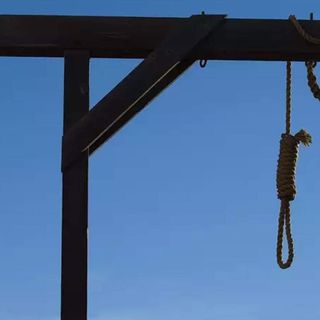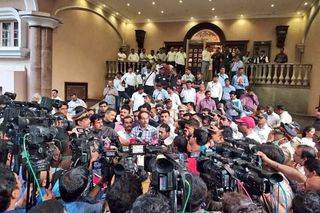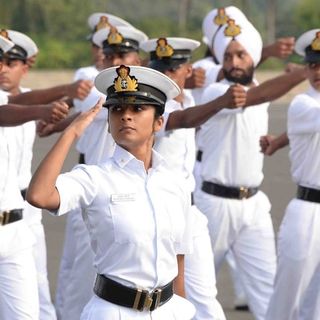
Nobody Knows What the Government Is Doing to Fight Covid19
Neither the Prime Minister’s speech nor the health ministry has made a compelling case to the public about social distancing.

On Thursday, Prime Minister Narendra Modi addressed India’s public and their concerns about Covid19 through a televised speech. He urged them to unite in these distressing times while also making appeals to salute members of the service sector and not to crowd hospitals, to hoard or to give into panic buying.
However, what struck a chord with the Indian audience, for whom social distancing is an uncommon, alien concept, was an appeal to observe a day-long Janata Curfew on Sunday, March 22, that will require people not to venture out of their homes unless absolutely necessary. In a way, it was to stress on the fact that social distancing is the only effective way to deal with the pandemic.
While the speech is being praised by many, like The Print’s founder Shekhar Gupta, who tweeted that it was the “calmest, most measured & important Narendra Modi has delivered in his public life,” it fails to address many more important issues.
The first and the biggest problem many seemed to have was the Prime Minister’s failure at mentioning any effort the government is undertaking or already has initiated to stop the spread of the novel coronavirus. Instead, his speech focused on what we, the Indian public, should be doing, suggesting the onus of fighting the disease is only on citizens, with no shared responsibility from the government.
Prashant Bhushan, a public interest lawyer and activist, tweeted, “Just compare the enormous measures that the Canadian govt has announced to help people through the #Covid19 emergency, with what Modi announced yesterday. Janta curfew & making noise in front of our house vs real measures to help those who are being devastated.”
On the same day as Modi’s speech, Canadian Prime Minister Justin Trudeau announced “a $27 billion plan to help all Canadians, to get through these challenging and exceptional times.”
Even on state level, various chief ministers have announced actions to mitigate the disease’s impact — take, for example, Kerala’s Pinarayi Vijayan, who announced on the same day as the speech, a Rs 20,000 crore package for the state to overcome Covid19. In addition to Vijayan, Mamata Banerjee and B.S. Yediyurappa, chief ministers of West Bengal and Karnataka respectively, have both announced a Rs 200-crore fund to tackle the coronavirus outbreak within their states. But on a country-wide level, there was no mention of any relief efforts or setting up of funds to deal with Covid19.
In his speech, Modi expressed concern about showing sensitivity towards the underprivileged and asked companies to refrain from wage cuts and to relax working conditions for private-sector employees and emergency workers. But, as journalists Vasudevan Mukunth and Siddharth Varadarajan write for The Wire, “It was a speech designed for the middle class with Modi saying all the right things to ensure their cooperation in containing the spread of the new coronavirus.” They add, “But there was very little for others, especially the vast majority of Indians who cannot work from home.”
Related on The Swaddle:
For People With Mental Health Conditions, Constant Covid19 Updates Make Everything Worse
The speech failed to address concerns such as how the government intends to deal with the challenges of testing, treating, or tracing Covid19, which the World Health Organization (WHO) has said are efforts as important as isolation.
Instead, Modi’s advice on supporting people who are directly involved in the battle against coronavirus – healthcare workers, sanitation staff, etc — ran to asking everyone else to get on their balconies and doorsteps for five minutes during the Janata Curfewand clap their hands or ring bells. Yes, these workers ought to be applauded for their efforts, but what about official support, ask Mukunth and Varadarajan. For the long hours these essential workers have been working — in many cases, without personal protective gear or access to paid leave — “… some of these solutions are the proverbial band-aids in place of more drastic measures,” they write.
Journalist Rituparna Chatterjee also weighed in: “This ‘clap for doctors’ while doctors are literally saying ‘don’t clap for us, just give us resources for fight on ground’ is an eerie reminder of ‘what about jawans’ while jawans were asking for better rations. It’s easier to be ‘seen’ making a gesture than actually making it.”
The absence of updates as to what the health ministry, the National Centre for Disease Control (NCDC), and the Indian Council of Medical Research have been up to is another major concern.
The above is evident from the experiences of journalists Anoo Bhuyan and Supriya Sharma. Bhuyan, after having attended a media briefing on Covid19 conducted by the Ministry of Health and Family Welfare, said the atmosphere was hostile; the ministry official wasn’t “answering clearly or fully. Press Information Bureau officer kept blocking reporter from clarifying or following up. Not reassuring. MOHFW officer just on loop with rhetoric: ‘We should work together as country. Do social distancing.'”
Sharma, the executive editor at Scroll, tweeted, “I’ve been following all press briefings by India’s health ministry and reading every press note on #COVID2019. The government is stonewalling questions, not giving basic information. For starters, can we get daily statewise data on the number of people tested for Covid-19 and the number of positive cases? States are sending regular updates to the Centre. But all we get is aggregate information like this twice a day.”
In his speech, Modi was also reluctant to address community transmission. Community transmission happens when a patient who is not exposed to anyone known to be infected and has not traveled to countries in which the virus is circulating still tests positive for infection.
So far, the ICMR, which is heading India’s national response, has said that India is free of community transmissions. This may mean that either they are trying to reduce the count or not even pursuing cases of community transmission. Even in the media briefing, as Bhuyan wrote, the MOHFW denied having any cases of community transmission.
“If you don’t look, you will not find,” writes journalist Priyanka Pulla for The Wire.
On more than one occasion, health ministry officials have said that India has cases of community transmission only to retract and ‘clarify’ that they actually meant local transmission, that is, traceable transmission that has occurred inside Indian borders.
Pulla writes interchanging community with local transmission is a problem because the terms, “… stand for two distinct phases of an outbreak. Much of ICMR’s testing strategy today is based on the assumption that there is no community transmission in India, and this strategy is likely to change only when this assumption changes.”
By not communicating clearly, the government is not being transparent about what it is doing for its citizens. For people to practice social distancing, handwashing, quarantine, or isolation, or to feel comfortable reporting symptoms to hospitals the government should give people the trust to do so.
The need of the hour is for the health ministry, ICMR, and the NCDC to communicate clearly, and on a regular basis the number of daily cases, the tests conducted, and all efforts and new developments undertaken.
“Only then will the Indian government win the public trust it needs to contain Covid19,” writes Pulla.
Anubhuti Matta is an associate editor with The Swaddle. When not at work, she's busy pursuing kathak, reading books on and by women in the Middle East or making dresses out of Indian prints.
Related


Women Officers Can Now Pursue Lifetime Careers in the Navy: Supreme Court
